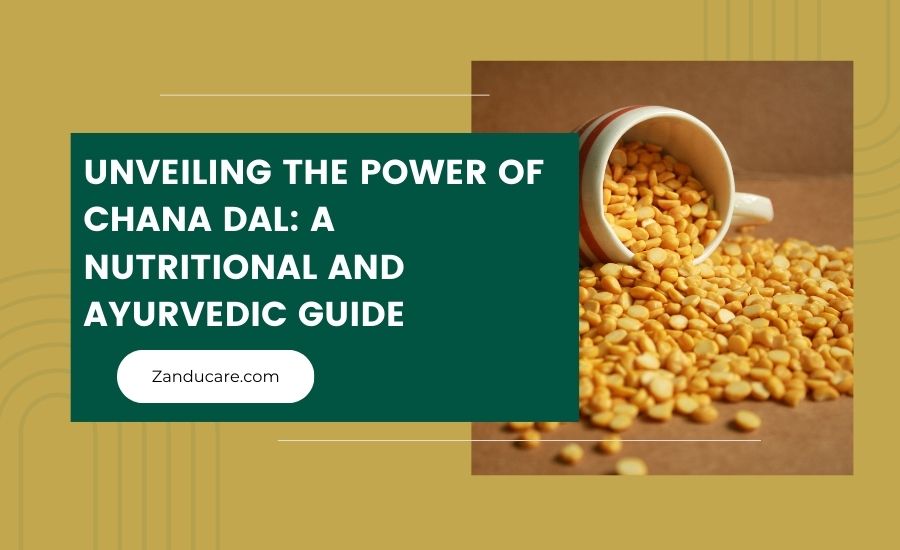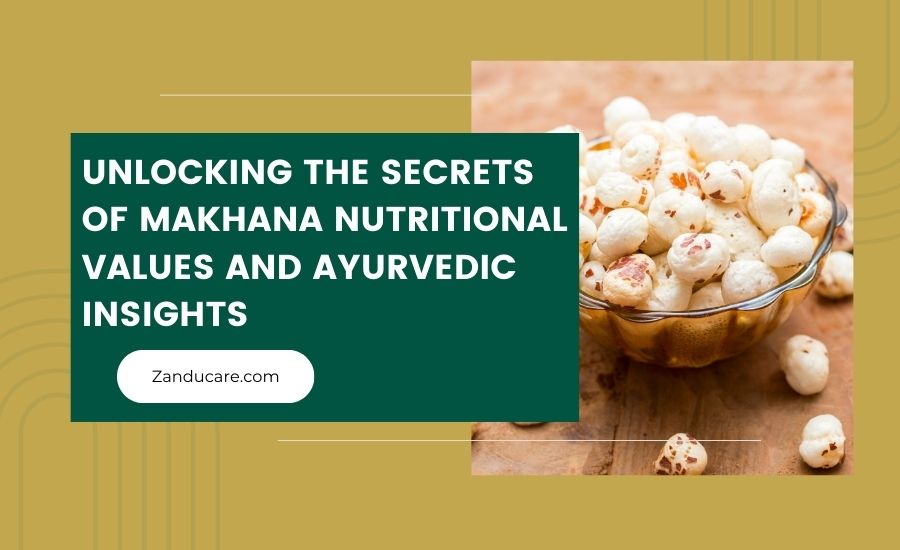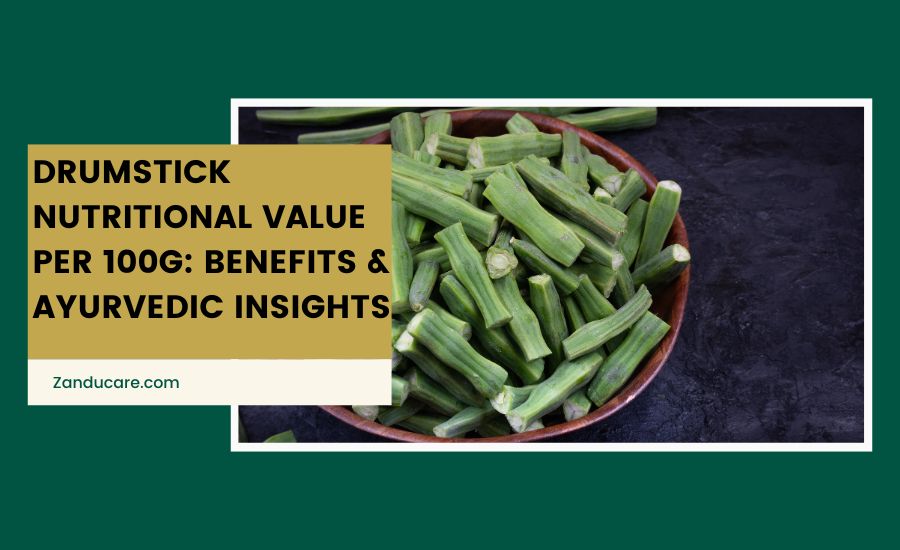Chana dal, or Bengal gram, is one of the staples in Indian cuisine, and we use it to make various dishes. This versatile legume can spice up your dishes while delivering a generous dose of nutrition. To learn about the Chana dal's nutritional value per 100g, check out this definitive guide, which discusses its nutritional composition and Ayurvedic effectiveness.
|
Did you know?
- Chana dal is a powerhouse of nutrients, making it an excellent addition to a balanced diet. It is considered to be a drought-tolerant legume.
- Chana dal offers a wide range of health benefits, making it an excellent addition to a balanced diet.
- It has a low glycemic index, making it good for diabetics, and it also does not cause rapid spikes in blood sugar levels.
- It is used for making different snacks.
|
Nutritional profile of Chana dal
Chana dal is one of the best source of nutrients, making it an excellent addition to a balanced diet. It is considered to be a drought-tolerant legume. Let's dive into the details regarding the Chana dal nutritional value per 100g:
Protein content
Chana dal is a great vegan source of protein, with 22 grams per 100 grams provided. It is great for a working-out teen or physical fitness vegan who has to have 15 grams of protein with every meal.
Carbohydrates and Fibre
Chana dal is loaded with complex carbs and fibre needed for digestive health. It contains 60g of carbs and 15g of fibre per 100 grams. Chana dal husk is packed with fibre that helps maintain blood sugar levels, keeps you fuller for a long time after eating, and supports your bowel movement.
Vitamins and minerals
Chana dal is a good source of several vitamins and minerals. It is rich in iron, folate, magnesium, and phosphorus. Manganese scavenges harmful free radicals, and zinc prevents oxidative stress! The nutrients are important for good health and development of the immune system, particularly in children.
Caloric value
Chana is also a versatile food because Chana dal, when cooked, offers approximately 350 kcal. This goes a long way toward satisfying hunger and including it in any balanced diet.
Ayurvedic analysis of Chana dal
In Ayurveda, Chana dal is known as Chanaka and is classified as a legume (Shimbi Dhanya Varga). Let's explore its properties and effects on the three doshas (Vata, Pitta, and Kapha):
Body constitution (doshas)
Chana dal has a cold potency (Virya) and is one of the few legumes considered to be neither heating nor cooling for all three doshas, making it balanced for Pitta and Kapha. But it could increase Vata dosha as it is dry.
Digestive properties
Ayurveda clearly states that strong digestive power is the root cause of health. Raw Chana dal is heavy to digest (Guru). To make it relatively light and easy to digest during summer, Chana dal can be boiled or steamed.
Preparatory recommendations
According to Ayurveda, soaking Chana dal in water for a few hours before cooking tunes up digestibility and minimises side effects. This process assists in breaking down complex carbohydrates, reducing gas production.
Nutrition table
Let’s take a look at the chana dal nutritional value per 100g -
|
Nutrient
|
Amount
|
|
Calories
|
350 kcal
|
|
Protein
|
22g
|
|
Total Fat
|
6g
|
|
Carbohydrates
|
60g
|
|
Fibre
|
15g
|
|
Sugars
|
2g
|
|
Calcium
|
45mg
|
|
Iron
|
5mg
|
Health benefits of Chana dal
Chana dal offers a wide range of health benefits, making it an excellent addition to a balanced diet. Let's explore some of the key advantages:
Weight management
The fibre and protein in Chana dal curb hunger pangs, which help you control weight. It is also helpful in controlling blood sugar and would not let it reach a high level suddenly, causing sudden food cravings.
Diabetes control
It has a low glycemic index, making it good for diabetics, and it also does not cause rapid spikes in blood sugar levels. Adding Chana dal to the diet can effectively control blood sugar and reduce your risk of type 2 diabetes.
Heart health
Chana dal is high in soluble fibre, which helps lower LDL, proving its efficacy for those dealing with heart conditions. Moreover, Chana dal is rich in folates that may help reduce homocysteine levels - a risk factor for heart disease.
Skin and hair health
Zinc found in Chana dal is known to keep your skin and hair healthy. The high protein content in Chana dal also helps develop and repair skin and hair cells.
Also, do check calorie count of:
Cooking with Chana dal
Chana dal is a versatile ingredient that can be used in a variety of traditional Indian dishes as well as modern recipes. Here are some examples:
Traditional recipes
This dal is extensively used in Indian cooking, especially when added to dishes such as dal, vada, and sambar. It is used for making different snacks.
Modern twists
Some of the modern Chana dal recipes are pancakes, idlis, and Chana dal fries. Soups, salads, and even sweet pies offer wonderful versatility for this intriguing ingredient.
Preparation tips
To enjoy this wonderful Chana dal at its best nutritional benefit, use it with very little water and no overcooking. Methods such as steaming or pressure cooking will help the extract retain nutritional value while making it easier for digestion.
Potential allergies and side effects
While Chana dal is generally safe for most people, it may cause allergic reactions or side effects in some individuals:
Legume allergies
Some people may have an allergy to legumes, including Chana dal. Signs of a legume allergy: hives, rash, indigestion, and troubled breathing. If you suspect an allergy, see a healthcare provider for an evaluation.
Digestive issues
Now, Chana dal is a type of legume that can cause gas or bloating and maybe even diarrhoea in some people who just don't have the stomach to eat dals. However, soaking the dal and appropriate preparation can help reduce these side effects.
Conclusion
Chana dal is a nutritional powerhouse offering many health benefits. It is a high protein source, has complex carbohydrates, is packed with fibre, and is loaded with essential vitamins. According to Ayurveda, by nature, Chana dal is balanced for Pitta and Kapha doshas.
Consuming this legume can help lose weight and keep diabetes and heart disease at bay. Chana dal is a must-have ingredient in every kitchen with its delicious flavours and versatility. As always, any concerns about or allergies to legumes should be evaluated and discussed with a healthcare professional.
FAQs
1. What is the protein content in 100g of Chana dal?
As per the Chana dal nutritional value per 100g, 100 grams of Chana dal contains 22 grams of protein.
2. Can Chana dal help in weight loss?
Yes, the fibre and protein in Chana dal can promote feelings of fullness and satiety, which may help manage weight.
3. How does Chana dal affect diabetes?
Chana dal has a low glycemic index, which means it does not cause rapid spikes in blood sugar levels. Incorporating Chana dal into the diet can help manage blood sugar levels and reduce the risk of developing type 2 diabetes.
4. Are there any Ayurvedic reasons to avoid Chana dal?
Chana dal may increase Vata dosha due to its dry nature. Individuals with a predominant Vata constitution or those experiencing Vata imbalances may need to consume Chana dal in moderation or avoid it altogether.
5. How can I make Chana Dal more digestible?
To enhance the digestibility of Chana dal, Ayurveda suggests soaking it in water for a few hours before cooking. This process helps break down complex carbohydrates and reduces gas production. Additionally, boiling, steaming, or frying Chana dal can make it lighter and easier to digest.
6. What dishes can I prepare using Chana dal that are both healthy and tasty?
Chana dal can be used in traditional Indian dishes like dal, vada, and sambar. It can also be incorporated into modern recipes such as Chana dal pancakes, idlis, and Chana dal fries. Soups, salads, and even desserts can be made with Chana dal for a unique twist.
7. Does Chana dal contain any allergens?
Some people may be allergic to legumes, including Chana dal. Symptoms of a legume allergy may include hives, rashes, digestive issues, or difficulty breathing. If you suspect an allergy, consult with a healthcare professional.
8. How does Chana dal contribute to muscle growth?
Chana dal is an excellent source of plant-based protein, providing 22 grams per 100 grams. This high protein content makes it valuable for building and maintaining muscle mass.
9. Can Chana dal be a part of a low-carb diet?
While Chana dal is relatively low in carbohydrates compared to other legumes, it still contains a significant amount of complex carbohydrates and fibre. It may not be the best choice for strict low-carb diets, but it can be incorporated in moderation as part of a balanced diet.
10. What are the best ways to store Chana dal to preserve its nutritional value?
Chana dal should be stored in an airtight container in a cool, dry place away from direct sunlight. This helps preserve its nutritional value and prevent spoilage. Avoid storing Chana dal in the refrigerator or freezer, as the moisture can cause it to spoil faster.
References
-
Chana dal is a powerhouse of nutrients, making it an excellent addition to a balanced diet. It is considered to be a drought-tolerant legume.(https://www.researchgate.net)
-
Chana dal offers a wide range of health benefits, making it an excellent addition to a balanced diet. (https://www.researchgate.net)
-
It has a low glycemic index, making it good for diabetics, and it also does not cause rapid spikes in blood sugar levels. (https://www.ncbi.nlm.nih.gov)
- It is used for making different snacks. (https://www.researchgate.net)










